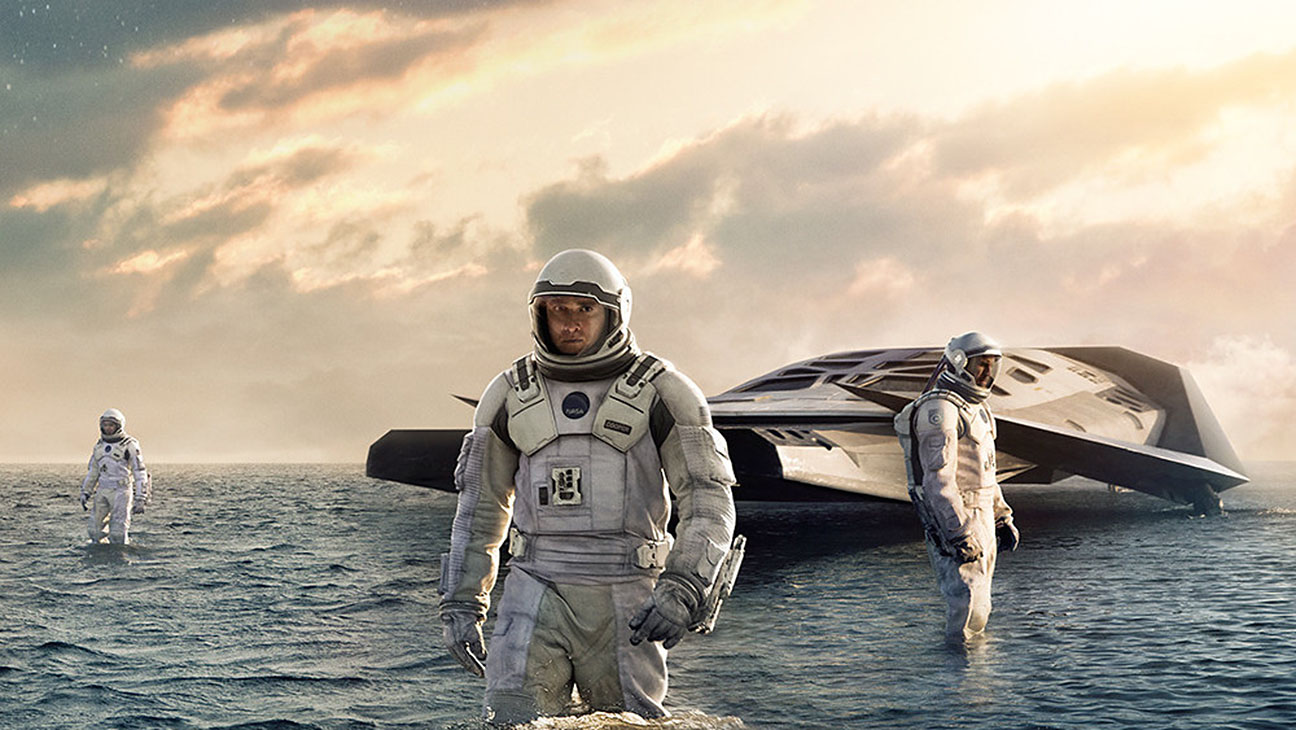Imagine living through two years in space to return and discovering that earth has lived 23 years. If you’re having trouble envisioning that, you’re not alone; Christopher Nolan’s Interstellar is just as complicated as it is intriguing. Fascinating shots and intricate intergalactic scenery are present throughout the film, but don’t go to one of his movies expecting it to be a simple, easily comprehended film. Nolan’s experimentation of theories of time and space translate to the big screen in a powerful and unforgettable way, but definitely require some extra thinking.
We meet Cooper (Matthew McConaughey), his son Tom (Timothée Chalamet), his daughter Murph (Mackenzie Foy), and his father-in-law Donald (John Lithgow). It doesn’t take long to figure out that earth is experiencing a Dust Bowl far more fatal than the Midwest suffered in the 1930’s. If no one finds a solution to this problem soon, human life as we know it will cease to exist.
That’s when Cooper reunites with Professor Brand (Michael Caine) and is met with a severe moral predicament. He can leave his family (very likely never to see them again) to find a sustainable planet in another galaxy or remain on earth with his family and struggle to survive. Obviously Cooper chooses the former, and embarks on a journey that is the story of Interstellar.
The absolutely beautiful cinematography, thanks to cinematographer Hoyte Van Hoytema (Her, Tinker Tailor Soldier Spy), brings the potentially fatal mission to life, involving wormholes and escalating dimensions within space.
Hans Zimmer composes a stunning musical score for the film that sounds unlike anything he has previously composed. Nolan wanted every aspect of this film to be revolutionary even though he refers to it as “an ode to human spaceflight.”
Interstellar was shot using 15/70mm IMAX film. In case you might not know what that means, just know that it might be the last movie to ever be shot in that format. For a science fiction movie, the film is achievement in itself simply because it was shot on film rather than digitally, which is how increasing amounts of movies are created today. Interstellar may be best described as the 2001: A Space Odyssey of our generation, yet I think it functions in its own category and will soon have other movies comparing themselves to this one.
Be prepared to have your heart ripped out of your chest and thrust back in several times throughout the film. The emotionally-charged dramatic moments of the film compliment the action sequences that leave you breathless in your seat. In one heartbeat, time moves from one hour to over twenty years, and while Cooper doesn’t age more than a couple years, the ones he loves most on earth are forced to go through the hardest parts of life without him. As I said before: if you want an action-packed movie riddled with fake explosions and cheap dialogue, you might not be ready for the emotionally jarring nature of this movie.
When you get down to the core of the film, it preaches that not even the theory of relativity or quantum mechanics can replace the importance of love, because it transcends book-smarts and equations. Amelia Brand (Anne Hathaway) expresses how love is what every decision that man makes comes down to; it is simply something known and felt that guides us internally.
Audiences around the globe had their breath knocked out of them from the intense punch that Gravity hit them with. However, I found myself gasping several times during this movie, not just by what I saw experienced with Cooper’s journey through time and space. Just as Cooper finds himself in the fifth-dimension, outside of linear time, this movie transcends time. It is the new epitome of the science-fiction genre.
Length: 169 minutes
IMdB rating: 9.1/10
My rating: 4.5/5


